Kristine Hughes's Blog, page 50
February 26, 2017
ENGLAND'S WAR TIME PET CRISIS
National Portait Gallery The Duchess of Hamilton, 1878-1951 Recently, I was researching my new favourite period of British history, England between the World Wars, when I came across a new aspect of wartime Britain – the question of what to do with family pets during wartime. I hadn’t give this problem much thought and found … Continue reading "ENGLAND'S WAR TIME PET CRISIS"
Published on February 26, 2017 23:00
February 23, 2017
THE 1815: LONDON TO WATERLOO TOUR
Travel back to the year 1815 with Number One London Tours. Stroll the streets of Regency London with author Louise Allen. Walk the Waterloo battlefield with author and guide Ian Fletcher. Join us as we explore 1815 – a defining year in British history. FULL ITINERARY AND DETAILS
Published on February 23, 2017 23:30
February 19, 2017
DO YOU KNOW ABOUT . . . . PLAYS WITH NEEDLES?

A recent Google images search for examples of Mrs. Delany's shell work brought me to a blog called Plays With Needles by the exceedingly talented Susan Elliott. Her blog is a wonder and a delight, with gorgeous photos and interesting posts on where she finds her inspiration and what goes into the creation of her art. Reading about her shell work, above, I was interested to learn that Susan had found many of the shell components herself on the beach in Naples, Florida, which is only about forty minutes south of where I currently live. I know it well. It was fascinating to see what Susan's keen eye and abundant talent could do with the same shells others walk by daily without noticing. You can read the story behind the piece above here.

Like Mrs. Delany, Susan is a multi-medium artist and her blog posts are about so much more than her own amazing artwork. In her post about the Breakfast at Tiffany's inspired piece above, Susan discusses the cult of Holly Golightly and the gulf between the film and Truman Capote's novel. I love the way Susan has incorporated so many elements in this piece, resulting in a three dimensional creation with enough sparkle and bling to make even Holly take notice. Susan's use of meticulous beadwork is gorgeous.
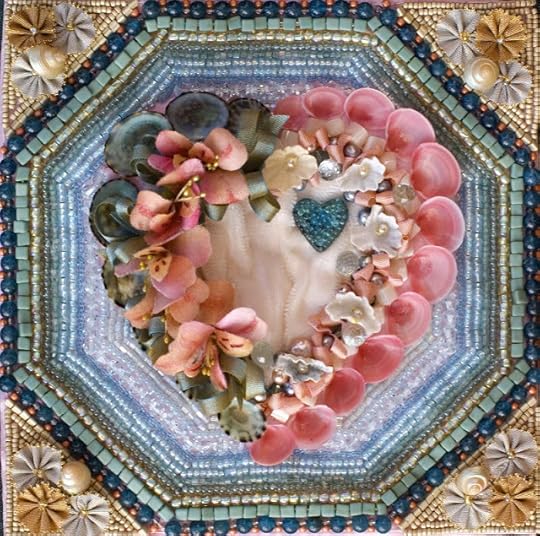
In this piece, Susan uses both shell and bead work elements. You can read more about it here.

Susan has titled the piece above Your Majesty and has written a fabulous, photo laden post about her research into historic royal wedding gowns, their decoration, design and embroidery. Susan found inspiration for this piece from several different gowns and time periods. You can read the entire post here.
Has your historic research taken you to unexpected places? If so, we'd love to hear about it!
Published on February 19, 2017 23:00
February 16, 2017
EXCITING NEWS FOR NUMBER ONE LONDON TOURS


We're thrilled to be able to share the news that VisitBritain (The British Tourist Authority) has invited Number One London Tours to be one of the selected international travel buyers at the ExploreGB Conference, VisitBritain's flagship annual event, providing invitees an invaluable opportunity to meet and network with Great British and Irish tourism suppliers and destinations across the UK. VisitBritain is the Official Tourism Website for UK Travel and we are humbled by the recognition extended to Number One London Tours and look forward to networking with destination representatives and travel suppliers who will no doubt add immensely to our Tour itineraries through 2018 and beyond.
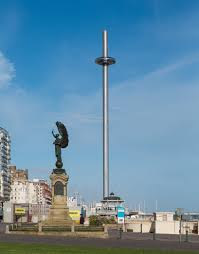

This year's ExploreGB Conference will take place in Brighton beginning on March 1, when events kick off with a tour of the new British Airways i360 observation tower (above) and dinner at the Belle Vue Brighton Restaurant, named after Belle Vue Field which was Regency Square's name in the 18th Century and featured in Jane Austen's Pride and Prejudice.

VisitBritain has also asked Number One London Tours to be their guest on a familiarization trip following the Conference that has been designed to showcase travel products and destinations in Kent, Essex and Hertfordshire. We'll be touring the gardens at Penshurst Place and Myddleton House, touring Leeds Castle, Knebworth House and Audley End House (above), visiting a brewery, sampling oysters and stopping in at highlighted pubs on our route. Along the way, we'll be sleeping at Hever Castle, the Abode in Canterbury, Marygreen Manor Hotel and Brocket Hall (below).
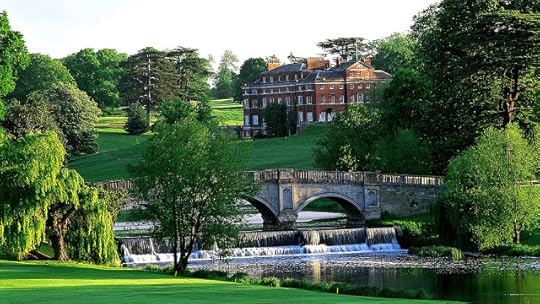
Of course, we'll be posting on Facebook all along the way, so don't forget to check in daily for updates. You'll find the Number One London page here and my personal page here.
Published on February 16, 2017 23:00
THE BUTLER DID IT IN THE LIBRARY… WITH SOME RATHER UNIQUE FURNISHINGS
by Louisa Cornell Me, poor man, my library was dukedom large enough. The Tempest William Shakespeare I cannot comprehend the neglect of a family library in such days as these. Fitzwilliam Darcy Pride and Prejudice When I have a house of my own, I shall be miserable if I have not an excellent library. Jane … Continue reading "THE BUTLER DID IT IN THE LIBRARY… WITH SOME RATHER UNIQUE FURNISHINGS"
Published on February 16, 2017 00:00
THE BUTLER DID IT IN THE LIBRARY... WITH SOME RATHER UNIQUE FURNISHINGS
by Louisa Cornell
Me, poor man, my library was dukedom large enough. The Tempest William Shakespeare
I cannot comprehend the neglect of a family library in such days as these. Fitzwilliam Darcy Pride and Prejudice
When I have a house of my own, I shall be miserable if I have not an excellent library. Jane Austen
One can hardly envision an English stately home without a library somewhere about the premises. Think of all the murder mysteries without a place to discover an inconvenient corpse if this were not true. Or what about all of those Regency romance heroes and heroines searching for a respite from the tedium of a ball, only to discover the one lurking about in their host's barely lit book room? One shudders to think!
It is surprising to discover large private libraries were rare in England before the 18th century. Before then, they were more likely to be found in the hands of kings, great lords, monasteries, and universities. However, a number of occurrences related to the Reformation of the 16th century - the spread of book printing, country houses began to take the place of monasteries and castles, the libraries of said monasteries were dispersed in sales as the monasteries were closed, and universities in the throes of humanist zeal purged their libraries, also in sales, all of which led to the acquisition of books by aristocrats eager to build their own book collections. Some of these aristocrats were genuine scholars and book lovers eager to preserve England's and the world's intellectual heritage. Others simply wanted to keep up with the neighbors. In three or four hundred years, very little has changed. Never underestimate the power of the male ego to turn Mine's bigger than yours. into a competition.
The fashionable bar for libraries in country houses was set in the 18th century by Edward Harley, 2nd Earl of Oxford. His elegant library at Wimpole Hall, designed by James Gibbs in 1730, consisted of a huge room built to house his collection of over 50,000 books and 350,000 pamphlets and three small cabinet chambers leading into the library which housed his collection of coins, seals, antique cameos, and manuscripts. Unfortunately, his debts forced the sale of the entire collection on his death in 1741. Or perhaps his heir simply wasn't the bookish type and opted to get rid of the library rather than land or other assets. Whatever the reasons for the dispersal of the library, the Earl of Oxford fired the starting shot across the bow of every aristocrat in England. The race was on to amass the largest and most unique and valuable collection of books and to erect the most spectacular temple to the written word in which to house them.
 Far end library - Wimpole Hall
Far end library - Wimpole Hall 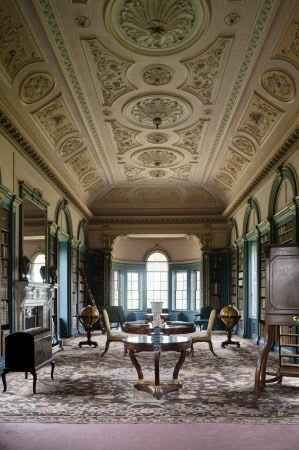
I will be covering a great deal more about the advent of libraries in stately homes in my follow-up post. (Yes, there will be a follow-up post. There is a reason I write novels and not short stories.) The library in an English country house was made up of a beautifully constructed room designed for the specific purpose of housing books. Once the room was designed, crafted, and finished it was filled, of course, with books. However, there was another, little studied, aspect of creating those beautiful libraries which I would like to address in brief in this post. After all, if you are going to dispose of a body it is helpful to have a few things in the room behind which to hide it. A dead body is so much more effective if it is found suddenly and results in screaming servants or fainting ladies. And remember those heroes and heroines meeting in the library? What happens if there is nothing on which, against which, or behind which to tryst? I'm all for romance, but carpet burns, even on a very expensive Aubusson carpet, do tend to ruin the mood.
Thus begs the question, what sort of furnishings might one find in his lordship's library? What started out as an ostentatious room to display one's intellectual snobbery soon became a refuge for the man of the house. His lordship could invariably be found "hiding" in his library when any number of unpleasant events occurred, including, but not limited to - his wife. Over the years it eventually morphed into a sort of living area for the family. This may be responsible for the sheer size of such rooms. Family togetherness was all well and good, but lets not become too bourgeoisie about this. By the late Regency it would not be unusual to find his lordship at his desk, her ladyship reading before the fire, the daughters at the piano at the far end of the library, and the sons perusing maps on a library table or sneaking a peek at grandfather's naughty books shelved on the top shelves at the far end of the library.
Here are a few items one might have found in the stately home library to facilitate the room's many purposes.
Library Steps -
Most libraries included shelves going nearly to the ceiling. Every inch of space was utilized. If a mezzanine balcony was not added to access those shelves at the higher levels, library steps were used to peruse the shelves above one's head. The set below includes a post with which to steady oneself when descending with an armload of books.
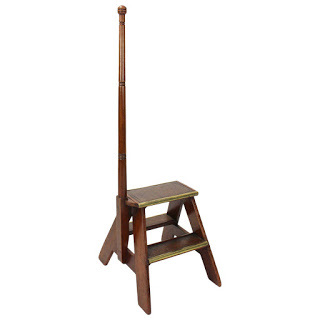 19th Century Mahogany Library Steps
19th Century Mahogany Library Steps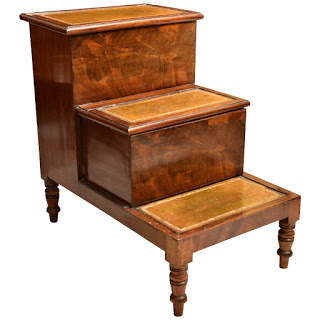 A sturdier version, also mahogany 19th century.
A sturdier version, also mahogany 19th century.Library chairs -
Once one had retrieved the books one wished to read, a comfortable chair in which to read them was necessary. Of course, most libraries included one or more fireplaces for heat and chairs and sofas were often arranged around them for reading and conversation. These items - chairs, sofas, and even chaises for those inclined to recline and read - might come from other areas of the house. (Trysting on a chaise is far more comfortable than trysting on a library table or worse. Remember the carpet burn?) More often, chairs ordered specifically for the library were put into use. Here are some examples of chairs designed for use in the library.
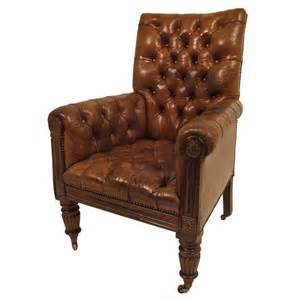 19th Century English Leather Library Chair
19th Century English Leather Library ChairThis looks to be a very comfortable chair and has the added advantage of wheels should one wish to move it closer to the fire or away from noisy family and guests. The chair above is in fantastic condition considering it is over 200 years old. Craftsmanship, ladies and gentlemen. Craftsmanship.
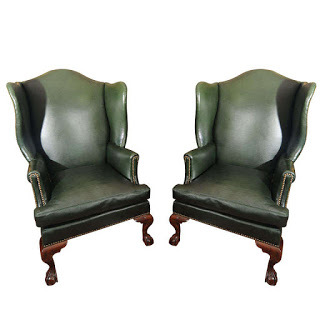 19th Century Leather Library Chairs
19th Century Leather Library Chairs These two were undoubtedly used on either side of a library fireplace. The sides might shield one from the prying eyes of others, or in the case of two people sitting before they fire they might shield a private conversation from others in the library.
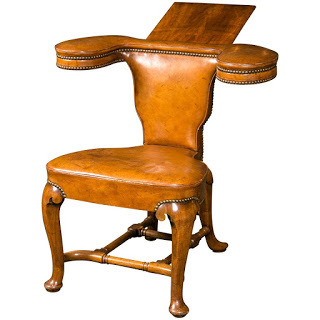 English Regency Library Chair
English Regency Library ChairI find this particular chair fascinating. The shelf on the back can be made to lay flat or can be dropped to the back of the chair completely. One can only assume it was made for someone to kneel in the chair and read over the back or perhaps the shelf was for the reader to stack extra books. No matter its function it is a uniquely designed chair and in all design books and catalogues it is listed strictly as a library chair.
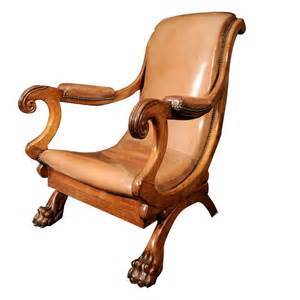 19th Century Rosewood Library Chair
19th Century Rosewood Library ChairThis chair represents the evolution towards comfort and relaxation in Regency era furniture, an evolution which started in those items designed for both the library and the bedchamber. A clear indication, perhaps, of these rooms being viewed as those where one might be more at ease than in the more public and formally social rooms of the house.
Bookcases -
Of course, the walls of libraries were lined with built-in shelves, inset bookcases or free standing bookcases pressed to the walls. In addition to these large shelving units for books, a library might contain other places in which or on which to house books. There were smaller bookcases, library tables, and even movable cases on which to organize one's books for further use.
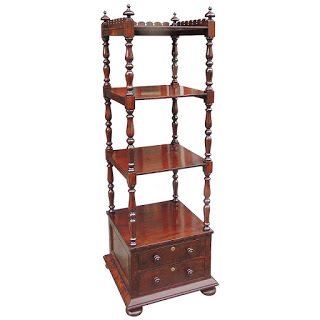
This lovely piece is a Regency era mahogany bookshelf with castors on the bottom to enable it to be moved easily about the library. The drawers were for manuscripts or folios. I would imagine a butler or footman might have found it useful in returning books to the shelves after his lordship left them scattered about the library.
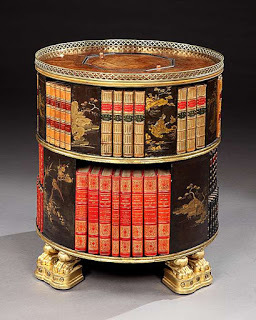
The above is a Regency era parcel gilt lacquer circular bookcase, and, yes, it spins. In the photograph, it is used to hold sets of books. One might imagine it next to a comfy chair with a few days' or weeks' worth of books on it within reach of his lordship or her ladyship during a long winter's reading season.
Library Tables -
Library tables were present in any 18th and 19th century library. They were used for a variety of purposes. They were designed to be placed in the middle of a room as surfaces to spread out maps, folios, or a selection of books. It is important to remember whilst these were family libraries, they were also resources for local vicars, magistrates, scholars, and anyone from the estate and local villages who might want to make use of them with his lordship's permission. They were often used to look over design plans for houses, gardens and estates. These rooms were not simply for show. Most, if not all, were used every day for every sort of pursuit today's public libraries might encounter.
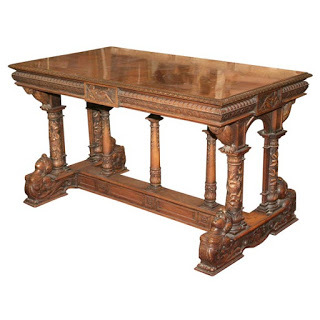
Library Globes -
A final item to complete the furnishing of the stately home library might be a globe. They were used to plot a journey, check the location of an investment property, or perhaps to plan a young man's Grand Tour. There were terrestrial globes and also globes of the constellations for those with an astronomical bent.
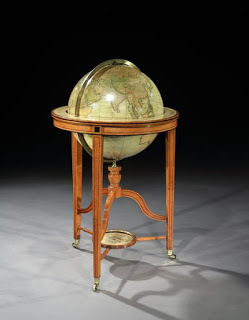
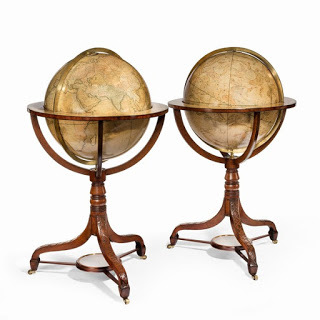 Pair of 21 inch Regency Globes - Terrestrial and Constellations for those with Navy affiliations.
Pair of 21 inch Regency Globes - Terrestrial and Constellations for those with Navy affiliations.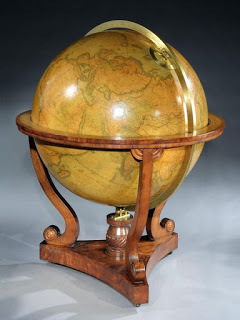 Rare Regency Era 36 inch terrestrial globe by Cary's of London
Rare Regency Era 36 inch terrestrial globe by Cary's of LondonThere you have it, a few of the odds and ends, unique pieces designed and created for use in the magnificent libraries of those exquisite country houses. They created and continue to create an atmosphere of elegance and intellectual pursuit. They gave these spaces a personal touch, often an indication of the family's character, attitudes, and even their relationships with each other. These pieces are also markers in the evolution of the views of houses as homes rather than simply showplaces. Items previously designed with an eye to their ability to stress the owner's wealth, success, and power began to morph into pieces crafted to be practical, to blend in with their surroundings, and to promote concepts of ease and relaxation. Books became escapes as well as instruments of learning. Reading became a pastime enjoyed by all, rather than a strictly scholarly pursuit. As much as we owe the owners of these libraries for the preservation of our literary heritage, we also owe them thanks for making reading more than simply a search for knowledge, but also an endless source of joy.
Published on February 16, 2017 00:00
February 13, 2017
TEA & VALENTINES by Guest Blogger Marilyn Clay
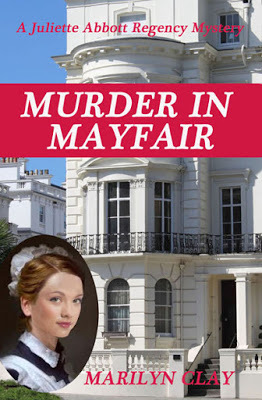
My newest Regency-set mystery novel, titled Murder In Mayfair: A Juliette Abbott Regency Mystery, takes place in London in February 1821. The book features my young Regency sleuth Miss Juliette Abbott, who, as you may recall from Murder At Morland Manor, successfully exposed who killed the Morland heir. Now, Juliette is back in London and she and her friend, Miss Cathleen Haworth are preparing to try their hand at selling some of the late Lady Carstairs’ priceless artifacts to a London curiosity dealer . . . but before they can even begin, the likeable gentleman suddenly, and shockingly, turns up dead!
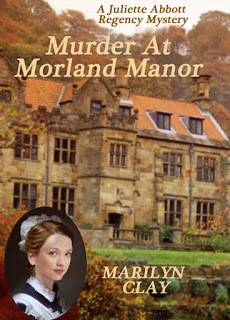
With no funds to hire a Bow Street detective to investigate the crime, Juliette takes on the daunting task of uncovering who killed the handsome man herself. However, even as Juliette searches for clues, she still goes on living. When February 14, Valentine’s Day arrives, she and another young lady friend set off to Gunter’s for tea and a cherry tart to mark the occasion. (I confess I did not know it was accepted practice for young ladies to frequent Gunter’s in one another’s company, meaning it was not necessary they be accompanied by a gentleman; but research bore that out, so off my two female characters went to Gunter’s). The following is a short excerpt from MURDER IN MAYFAIRin which Juliette’s young friend Marianne Chalmers attempts to educate Juliette regarding a few little-known, Valentine’s Day customs:
Marianne soon came tripping down the stairs, a smile on her pretty face. Approaching me in the foyer, she began nattering on about ancient Valentine’s customs she knew of. “I hope to see a goldfinch today,” she said as we headed toward the carriage at the curb.“Whatever for?” I inquired, a trifle amused.“Because it will mean I am to marry a rich man! Were I to see a robin today, it would mean I will marry a sailor.”I glanced up at the sky as Mr. Gant handed Marianne into the carriage. Upon climbing in after her, I said, “I believe I spotted a sparrow on the wing just now.”“Oh, I don’t want to look!”“Why ever not?” I smiled. “What does seeing a sparrow on Valentine’s day mean?”“That you will marry a poor man. But, of course, it also means you will be very happily wed to your poor man.”I laughed aloud. “Well, since poor men are in great supply in England, I daresay happy wives must also be quite plentiful.”“Nonetheless, I would never marry a poor man,” she declared. “That alone would make me quite unhappy.”I did not reply, but Marianne’s remark told me she knew herself far better than I thought.
As an author, I truly love doing research for my Regency-set novels almost as much as I enjoy writing them. For this new mystery, Murder In Mayfair, I researched Curiosity shops in the early 19th Century, as well as the history of Bow Street Runners, those famous red-vested detectives who rushed to a crime scene in hopes of apprehending the criminal and hauling him (or her) before the magistrate at the Bow Street office to be questioned and perhaps, brought up on charges. Believe me, I learned plenty about Bow Street I did not know before!Thing is, I usually don’t know until I get deeply into my story, exactly what all I will need to know for the story I’m writing. I try to do my research ahead of time so I will not be drawn away from my story for long periods while I search out the answers to questions that arise as I’m writing, but unexpected things invariably come up, for instance, at the outset, I did not know Juliette’s gentleman friend Mr. Talbot, whom you might recall she met in her previous adventure at Morland Manor, would call and want to take her to tea at a public tea room, so I needed to make sure there actually werepublic tea rooms in the 1820s. Off I went to check it out and did, indeed, learn some fascinating facts.

The first public tea room in London was located at #216 Strand in 1706 and was opened by Thomas Twining, a popular name even today in the tea industry. In 1787 the Twining Tea Company created what is thought to be the world’s oldest commercial logo and it has been in continuous use ever since. I also learned that when Twining celebrated its 300thanniversary, they introduced a special blend of tea and offered commemorative tea caddies. In addition, Twining is a Royal Warrant holder, appointed by Her Majesty The Queen. I did not know that.I do hope you will want to follow Miss Juliette Abbott’s latest sleuthing efforts in Murder In Mayfair. Juliette is off to Margate next. Who can say what fascinating new facts I’ll learn about that seacoast city. Until next time . . . I hope you enjoy Murder In Mayfair.
“I LOVED it! It's a mystery, not a romance! Juliette is intriguing, endearing, interesting and all around captivating. As a reader, you can’t help but want to take the journey with her as she uncovers clues and solves the mystery. Author Marilyn Clay has penned a refreshing read from a different perspective. Marilyn Clay’s Regency-set mysteries breathe new life into the genre! Well done!!!” -A. L. Hall, Mystery Reviewer.
You’ll find Murder In Mayfair at Amazon, Barnes&Noble, Apple itunes, KOBO, and in Trade paperback.
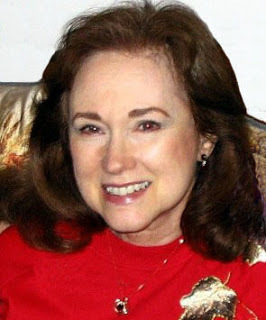
Best-selling author Marilyn Clay has written numerous novels set during the English Regency period. For sixteen years, she published The Regency Plume, an international newsletter focused on the English Regency. She has also written several historical suspense novels, two set in Colonial American Jamestown in the 1600s; another set in Philadelphia in 1776, and a contemporary murder mystery set in Dallas, Texas. Her latest novels include the first two books of her new Juliette Abbott Regency-set Mystery Series, Murder At Morland Manor and Murder In Mayfair, released in January 2017. A full-time writer, Marilyn is currently at work on Murder In Margate, #3 in the Juliette Abbott Regency Mystery Series, scheduled for release in August, 2017. You can read more about Marilyn Clay’s novels at Marilyn Clay Author or her Amazon Author Central page.
Published on February 13, 2017 23:00
February 11, 2017
PINTEREST BOARDS WE LOVE
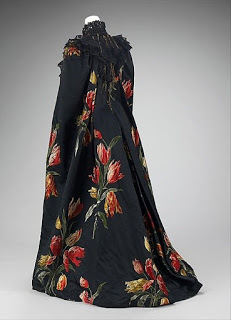
Fashion Through the Ages - Agnes Brun
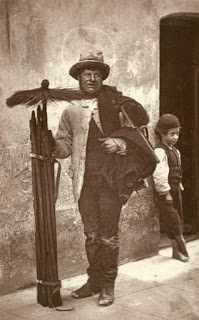
The Dark Side of the British Empire - Roberto Romagnoli
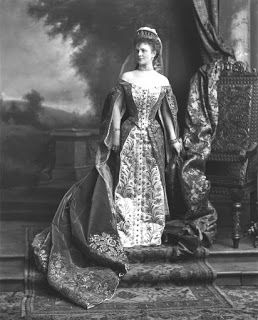
Court Attire - Rachel
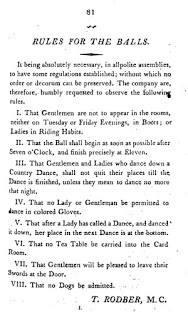
Etiquette and Manners - Joanna Waugh
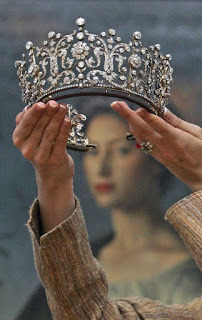
Tiaras - Amanda McCabe
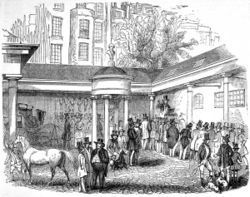
Regency Hotspots - Romance Anne
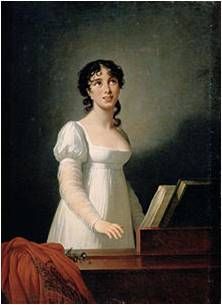
Opera in Regency England - Louisa Cornell
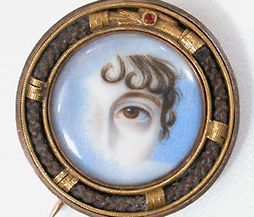
Random Bits of Regency - Bess Gilmartin
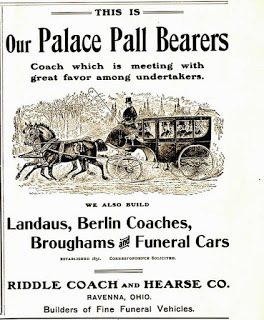
Travel: Regency and Victorian Style -Vic (Jane Austen's World)
Published on February 11, 2017 00:00
February 8, 2017
A ROOM BY ANY OTHER NAME – Those Regency Ladies Are At It Again!
It is a truth universally acknowledged, that a Regency era lady with a penchant for making and collecting music must have a designated room for doing so. If one studies the floor plans of most stately homes as they appear today, one will find a room designated the music room, even if said room only …
Published on February 08, 2017 00:00
A ROOM BY ANY OTHER NAME - Those Regency Ladies Are At It Again!
It is a truth universally acknowledged, that a Regency era lady with a penchant for making and collecting music must have a designated room for doing so.
If one studies the floor plans of most stately homes as they appear today, one will find a room designated the music room, even if said room only houses a single instrument. This became common practice in the late nineteenth century, but most of these rooms were once used as parlors or drawing rooms. They were not designed specifically as music rooms.
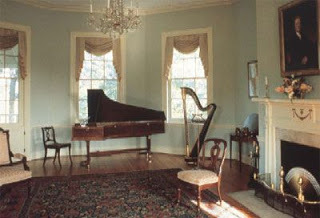 A drawing room or morning room was often used to display a household's instruments.As strange as it seems, with the emphasis on musical accomplishment expected of young ladies beginning in the eighteenth-century and becoming nearly a mania during the Regency era, before the middle of the eighteenth-century the inclusion of a specifically designed and designated music room in house plans for both stately homes and town mansions was rare. Beginning in the 1760's, the inclusion of this room in plans for new homes and renovations for existing homes became increasingly more common. This indicates a major shift in the role of music in the domestic and social lives of the residents of these homes.
A drawing room or morning room was often used to display a household's instruments.As strange as it seems, with the emphasis on musical accomplishment expected of young ladies beginning in the eighteenth-century and becoming nearly a mania during the Regency era, before the middle of the eighteenth-century the inclusion of a specifically designed and designated music room in house plans for both stately homes and town mansions was rare. Beginning in the 1760's, the inclusion of this room in plans for new homes and renovations for existing homes became increasingly more common. This indicates a major shift in the role of music in the domestic and social lives of the residents of these homes.
Perhaps one of the first set of house plans which recorded a specific room dedicated to music was drawn by no less a designer than Robert Adam himself. In 1760, as lead architect for the creation of Sir Nathaniel Curzon's showplace - Kedleston Hall - Adam drew plans for a neoclassical Temple of Art which encompassed an enfilade on one entire side of the entrance hall. It consisted of a music room, a drawing room, and a library. These rooms were so labelled in a catalogue printed in 1769, which was used to guide tourists around the house. This catalogue was reprinted at least four times by 1800 and would have been well-known to any wealthy landowner and / or peer looking to build or renovate a home.
 The Music Room at Kedleston Hall
The Music Room at Kedleston Hall
An impetus of Adam's design of this arrangement of rooms was the ability to make available a large audience chamber by opening the three rooms into each other by a series of folding doors. (If you look at the right hand edge of the photo above you will see the door frame leading into the next room.) This arrangement enabled the entire area to be used in featuring a talented family musician or even a professional for a large gathering of people. One must remember Kedleston Hall was primarily a place to house the Curzon family's extensive collections of art and to entertain on a grand scale. Music, especially that provided by the talented daughters of a household, began to play a great part in these entertainments. (It wasn't the Miss America Pageant, but it came close. And was so much more refined than auctioning one's daughter off at Tattersall's.)
Adam was exceedingly interested in music and went on to design music rooms and even keyboard instrument cases for both town and country homes for a wide range of clients.
Stop by this blog squarepianos.com/blog.html to see two posts on the piano and harpsichord cases he designed for Catherine the Great. Yes, that Catherine the Great.
This business of designing a music room which could be closed off for private tutoring and practice and then opened up to other rooms by way of a series of folding doors carried over into Adam's designs for houses in London as well. Whilst in Town the impetus was partly due to the availability of professional singers and musicians to hire in addition to those entertainments provided by wealthy amateurs; more often it was to show off the musical accomplishments of the women in the household - the male patrons' wives or daughters. It also provided a place to house the instruments and music collections of these ladies. There can be no doubt the ladies of the house had a great deal to say about the addition of music rooms to the plans for their homes both in the country and in Town.
Adam expanded this practice in the design of the townhouse of Sir Watkin Williams-Wynn at Number 20 St. James Square in 1774. In addition to being the sion of the wealthiest family in Wales (a position this family maintained for 200 years,) Sir Watkin was a great patron of the arts, particularly music. He sponsored so many musical events in his London home he was even the subject of a caricature depicting himself and members of the nobility attending one of the Concerts of Ancient Music, a long running series of concerts he sponsored in London.
The design for Sir Watkin's townhouse provided a formal dining room on the first floor which opened by way of two-leaf doors leading into the music room. In addition to an exquisite ceiling and music-themed plaster work throughout the music room, Adam also designed the case for the organ gifted to by Sir Watkin to his first wife.
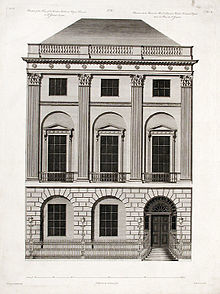 Robert Adam's design for the front facade of No. 20 St. James Square.
Robert Adam's design for the front facade of No. 20 St. James Square.
 Robert Adam's design for the Music Room ceiling at No.20 St. James Square
Robert Adam's design for the Music Room ceiling at No.20 St. James Square

This organ was made for the music room of Sir Watkin Williams-Wynn’s house in St James’s Square. The case was designed by Robert Adam in 1773 and made by the carver Robert Ansell. It is the only one of a small group of monumental Adam organ cases to survive. It is crowned by a portrait of Sir Watkin’s favourite composer, Handel. The life-size plaster figures represent Terpsichore, the muse of dance and song, with a lyre, and Euterpe, the muse of lyric poetry and music, with a flute. The organ itself was made at a cost of £250 by John Snetzler, the principal builder of the day. It was altered in 1783, and rebuilt and enlarged in 1864, when it was moved to Wynnstay, the Williams-Wynn house near Wrexham. The colour-scheme, also of 1864, added blue to the original green, white and purple.
It is currently housed in the National Museum of Wales.
Meanwhile, back at Tatton Park and Sledmere, homes to the Sykeses and Egertons, Samuel Wyatt was engaged to work on renovations and additions to both homes. As both masters of these homes sought to please the musical ladies of their households, their hire of Wyatt was a deliberate one. He served as Adam's assistant at Kedleston Hall. His vision for both Sledmere and Tatton Park included a Music Room with access to larger spaces by way of folding doors, just as Adam had done. After Wyatt's death in 1806, the projects were taken over by his nephew, Lewis Williams Wyatt. Also during this time, the grandiose, formal styles of Kedleston Hall and even the completed work at Sledmere gave way to a more domestic floor plan. Libraries, drawing rooms, and music rooms were arranged more and more often as a gracious suite of rooms divided by large folding doors to create a sort of large living area. The master of the house in his library was still in sight and sound of the mistress of the house in the drawing room at her embroidery and also within hearing distance of the musical members of the family practicing or playing for the family's enjoyment. These designs, greatly influenced by those arts thought exclusive to women, were the beginning of a more domestic view of the designs of stately homes. They were still showcases, statements of wealth, but they were becoming, for lack of a better word - homes.
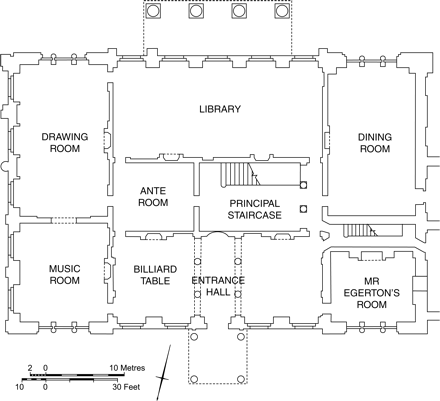 Ground plan of the executed design for Tatton Park. Final plans by Lewis William Wyatt, January 1808.
Ground plan of the executed design for Tatton Park. Final plans by Lewis William Wyatt, January 1808.
If you look at the plans above, you will see broken lines in some of the doorways. These are an indication of places where folding doors might be placed to open the various rooms into one large space. A similar arrangement was probably in place at Highclere Castle.
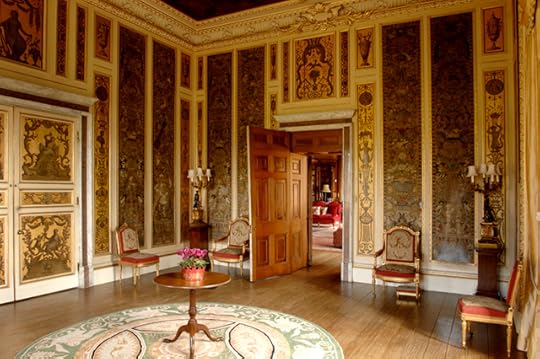 Music Room Highclere Castle. Notice the double doors to the left.
Music Room Highclere Castle. Notice the double doors to the left.
 Floor plan of Highclere Castle. Notice the position of the music room as anchor to the drawing room and library.
Floor plan of Highclere Castle. Notice the position of the music room as anchor to the drawing room and library.
What does it all mean? Through the collection of music and the subtle need for a place to display and practice it, women shaped the way music became viewed during the Georgian and Regency eras. Their collections were important enough to be bound and saved and made available to each other. Their musical accomplishments went from a way to keep them occupied, to a badge of distinction, to an art to be admired, to a heritage to be preserved, and finally to an architectural necessity. Not bad for a segment of the population primarily seen as ornamental breeders with little to no say in the way their lives were conducted.
The key to changing a man's mind is to make it appear to be his idea all along.
More important, music became a large part of the every day life of families during these eras. It grew to be a point of commonality, a source of entertainment and domesticity, all wrapped up in the days and nights and places these families lived their lives.
 The Music Room - Brighton Pavilion
The Music Room - Brighton Pavilion
Whether in the splendor of a monument to a king's excesses or in the manifestation of a superior amateur musician's desire to make music a part of her family's lives and legacy...
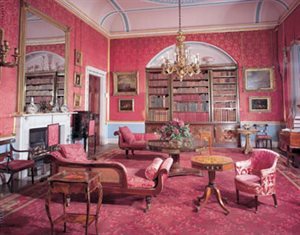 The far end of the music room at Tatton Park. The bookcase at the end of the room houses a great deal of Elizabeth Sykes Egerton's music collection.
The far end of the music room at Tatton Park. The bookcase at the end of the room houses a great deal of Elizabeth Sykes Egerton's music collection.
England and the musical world owes a great debt to those accomplished young ladies of the Georgian and Regency eras whose collections and music rooms are still being explored and studied today. Who knows when or where another great musical treasure will be uncovered next.
If one studies the floor plans of most stately homes as they appear today, one will find a room designated the music room, even if said room only houses a single instrument. This became common practice in the late nineteenth century, but most of these rooms were once used as parlors or drawing rooms. They were not designed specifically as music rooms.
 A drawing room or morning room was often used to display a household's instruments.As strange as it seems, with the emphasis on musical accomplishment expected of young ladies beginning in the eighteenth-century and becoming nearly a mania during the Regency era, before the middle of the eighteenth-century the inclusion of a specifically designed and designated music room in house plans for both stately homes and town mansions was rare. Beginning in the 1760's, the inclusion of this room in plans for new homes and renovations for existing homes became increasingly more common. This indicates a major shift in the role of music in the domestic and social lives of the residents of these homes.
A drawing room or morning room was often used to display a household's instruments.As strange as it seems, with the emphasis on musical accomplishment expected of young ladies beginning in the eighteenth-century and becoming nearly a mania during the Regency era, before the middle of the eighteenth-century the inclusion of a specifically designed and designated music room in house plans for both stately homes and town mansions was rare. Beginning in the 1760's, the inclusion of this room in plans for new homes and renovations for existing homes became increasingly more common. This indicates a major shift in the role of music in the domestic and social lives of the residents of these homes.Perhaps one of the first set of house plans which recorded a specific room dedicated to music was drawn by no less a designer than Robert Adam himself. In 1760, as lead architect for the creation of Sir Nathaniel Curzon's showplace - Kedleston Hall - Adam drew plans for a neoclassical Temple of Art which encompassed an enfilade on one entire side of the entrance hall. It consisted of a music room, a drawing room, and a library. These rooms were so labelled in a catalogue printed in 1769, which was used to guide tourists around the house. This catalogue was reprinted at least four times by 1800 and would have been well-known to any wealthy landowner and / or peer looking to build or renovate a home.
 The Music Room at Kedleston Hall
The Music Room at Kedleston HallAn impetus of Adam's design of this arrangement of rooms was the ability to make available a large audience chamber by opening the three rooms into each other by a series of folding doors. (If you look at the right hand edge of the photo above you will see the door frame leading into the next room.) This arrangement enabled the entire area to be used in featuring a talented family musician or even a professional for a large gathering of people. One must remember Kedleston Hall was primarily a place to house the Curzon family's extensive collections of art and to entertain on a grand scale. Music, especially that provided by the talented daughters of a household, began to play a great part in these entertainments. (It wasn't the Miss America Pageant, but it came close. And was so much more refined than auctioning one's daughter off at Tattersall's.)
Adam was exceedingly interested in music and went on to design music rooms and even keyboard instrument cases for both town and country homes for a wide range of clients.
Stop by this blog squarepianos.com/blog.html to see two posts on the piano and harpsichord cases he designed for Catherine the Great. Yes, that Catherine the Great.
This business of designing a music room which could be closed off for private tutoring and practice and then opened up to other rooms by way of a series of folding doors carried over into Adam's designs for houses in London as well. Whilst in Town the impetus was partly due to the availability of professional singers and musicians to hire in addition to those entertainments provided by wealthy amateurs; more often it was to show off the musical accomplishments of the women in the household - the male patrons' wives or daughters. It also provided a place to house the instruments and music collections of these ladies. There can be no doubt the ladies of the house had a great deal to say about the addition of music rooms to the plans for their homes both in the country and in Town.
Adam expanded this practice in the design of the townhouse of Sir Watkin Williams-Wynn at Number 20 St. James Square in 1774. In addition to being the sion of the wealthiest family in Wales (a position this family maintained for 200 years,) Sir Watkin was a great patron of the arts, particularly music. He sponsored so many musical events in his London home he was even the subject of a caricature depicting himself and members of the nobility attending one of the Concerts of Ancient Music, a long running series of concerts he sponsored in London.
The design for Sir Watkin's townhouse provided a formal dining room on the first floor which opened by way of two-leaf doors leading into the music room. In addition to an exquisite ceiling and music-themed plaster work throughout the music room, Adam also designed the case for the organ gifted to by Sir Watkin to his first wife.
 Robert Adam's design for the front facade of No. 20 St. James Square.
Robert Adam's design for the front facade of No. 20 St. James Square. Robert Adam's design for the Music Room ceiling at No.20 St. James Square
Robert Adam's design for the Music Room ceiling at No.20 St. James Square
This organ was made for the music room of Sir Watkin Williams-Wynn’s house in St James’s Square. The case was designed by Robert Adam in 1773 and made by the carver Robert Ansell. It is the only one of a small group of monumental Adam organ cases to survive. It is crowned by a portrait of Sir Watkin’s favourite composer, Handel. The life-size plaster figures represent Terpsichore, the muse of dance and song, with a lyre, and Euterpe, the muse of lyric poetry and music, with a flute. The organ itself was made at a cost of £250 by John Snetzler, the principal builder of the day. It was altered in 1783, and rebuilt and enlarged in 1864, when it was moved to Wynnstay, the Williams-Wynn house near Wrexham. The colour-scheme, also of 1864, added blue to the original green, white and purple.
It is currently housed in the National Museum of Wales.
Meanwhile, back at Tatton Park and Sledmere, homes to the Sykeses and Egertons, Samuel Wyatt was engaged to work on renovations and additions to both homes. As both masters of these homes sought to please the musical ladies of their households, their hire of Wyatt was a deliberate one. He served as Adam's assistant at Kedleston Hall. His vision for both Sledmere and Tatton Park included a Music Room with access to larger spaces by way of folding doors, just as Adam had done. After Wyatt's death in 1806, the projects were taken over by his nephew, Lewis Williams Wyatt. Also during this time, the grandiose, formal styles of Kedleston Hall and even the completed work at Sledmere gave way to a more domestic floor plan. Libraries, drawing rooms, and music rooms were arranged more and more often as a gracious suite of rooms divided by large folding doors to create a sort of large living area. The master of the house in his library was still in sight and sound of the mistress of the house in the drawing room at her embroidery and also within hearing distance of the musical members of the family practicing or playing for the family's enjoyment. These designs, greatly influenced by those arts thought exclusive to women, were the beginning of a more domestic view of the designs of stately homes. They were still showcases, statements of wealth, but they were becoming, for lack of a better word - homes.
 Ground plan of the executed design for Tatton Park. Final plans by Lewis William Wyatt, January 1808.
Ground plan of the executed design for Tatton Park. Final plans by Lewis William Wyatt, January 1808.If you look at the plans above, you will see broken lines in some of the doorways. These are an indication of places where folding doors might be placed to open the various rooms into one large space. A similar arrangement was probably in place at Highclere Castle.
 Music Room Highclere Castle. Notice the double doors to the left.
Music Room Highclere Castle. Notice the double doors to the left. Floor plan of Highclere Castle. Notice the position of the music room as anchor to the drawing room and library.
Floor plan of Highclere Castle. Notice the position of the music room as anchor to the drawing room and library.What does it all mean? Through the collection of music and the subtle need for a place to display and practice it, women shaped the way music became viewed during the Georgian and Regency eras. Their collections were important enough to be bound and saved and made available to each other. Their musical accomplishments went from a way to keep them occupied, to a badge of distinction, to an art to be admired, to a heritage to be preserved, and finally to an architectural necessity. Not bad for a segment of the population primarily seen as ornamental breeders with little to no say in the way their lives were conducted.
The key to changing a man's mind is to make it appear to be his idea all along.
More important, music became a large part of the every day life of families during these eras. It grew to be a point of commonality, a source of entertainment and domesticity, all wrapped up in the days and nights and places these families lived their lives.
 The Music Room - Brighton Pavilion
The Music Room - Brighton PavilionWhether in the splendor of a monument to a king's excesses or in the manifestation of a superior amateur musician's desire to make music a part of her family's lives and legacy...
 The far end of the music room at Tatton Park. The bookcase at the end of the room houses a great deal of Elizabeth Sykes Egerton's music collection.
The far end of the music room at Tatton Park. The bookcase at the end of the room houses a great deal of Elizabeth Sykes Egerton's music collection.England and the musical world owes a great debt to those accomplished young ladies of the Georgian and Regency eras whose collections and music rooms are still being explored and studied today. Who knows when or where another great musical treasure will be uncovered next.
Published on February 08, 2017 00:00
Kristine Hughes's Blog
- Kristine Hughes's profile
- 6 followers
Kristine Hughes isn't a Goodreads Author
(yet),
but they
do have a blog,
so here are some recent posts imported from
their feed.



